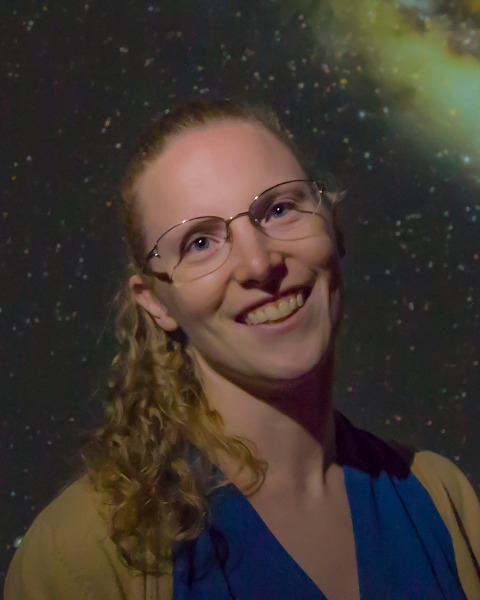Advancing Informal Astronomy Learning
Session: 7A: 1-Minute Summaries (21, in alphabetical order by last name)
7A-5 - Radio Astronomy Outreach and Education
Friday, August 23, 2024
10:50 AM - 11:40 AM US PDT

Shauna Edson (she/her/hers)
Astronomy Educator
Smithsonian National Air and Space Museum
Washington, District of Columbia, United States- MO
Mariel O'Brien
Smithsonian National Air and Space Museum
Lead Presenter(s)
Co-Presenter(s)
Abstract: The Smithsonian National Air and Space Museum is exploring small-dish radio astronomy as a component of our education activities. We currently offer astronomy outreach programs at the Museum’s two locations—the National Mall Building and the Udvar-Hazy Center in Chantilly, Virginia—as well as several partner locations. Visitors to our public programs can look through optical telescopes for both daytime observation of the Sun and nighttime viewing of planets and stars.
Our innovative idea is to add a radio observing program, which aligns with our goals of highlighting astronomy across the entire light spectrum. We own a small “itty bitty telescope” from NRAO and have recently used it for observing the Sun during our daytime programming at the National Mall. The telescope’s unique appearance and translation of radio emissions into sound has generated great interest among our public visitors, staff, and volunteers. We are now in the process of upgrading our equipment and creating educational materials, such as interpretive plans, to support the activity. This initiative has introduced observing outside of the visible regions of the spectrum, allowed us to conduct public observing on cloudy days, and provided our visitors who are blind or low vision a way to experience astronomical objects through audio.
For our 1-minute presentation, we plan to share our experiences with presenting radio observing to the public. We will also touch on the challenges in developing this program, both with the technology and teaching the public about observing light that is not visible to the eyes.
Our innovative idea is to add a radio observing program, which aligns with our goals of highlighting astronomy across the entire light spectrum. We own a small “itty bitty telescope” from NRAO and have recently used it for observing the Sun during our daytime programming at the National Mall. The telescope’s unique appearance and translation of radio emissions into sound has generated great interest among our public visitors, staff, and volunteers. We are now in the process of upgrading our equipment and creating educational materials, such as interpretive plans, to support the activity. This initiative has introduced observing outside of the visible regions of the spectrum, allowed us to conduct public observing on cloudy days, and provided our visitors who are blind or low vision a way to experience astronomical objects through audio.
For our 1-minute presentation, we plan to share our experiences with presenting radio observing to the public. We will also touch on the challenges in developing this program, both with the technology and teaching the public about observing light that is not visible to the eyes.

